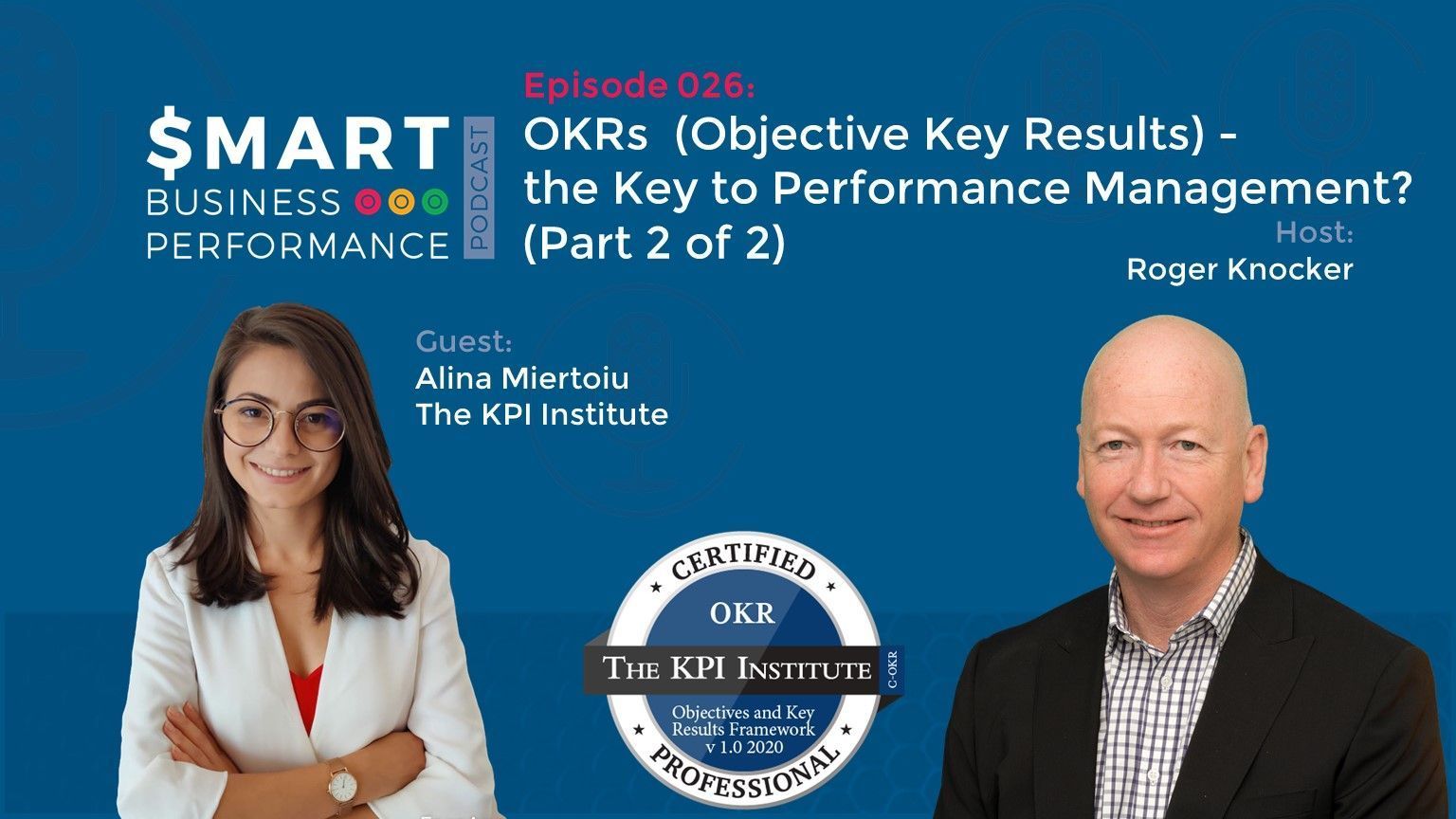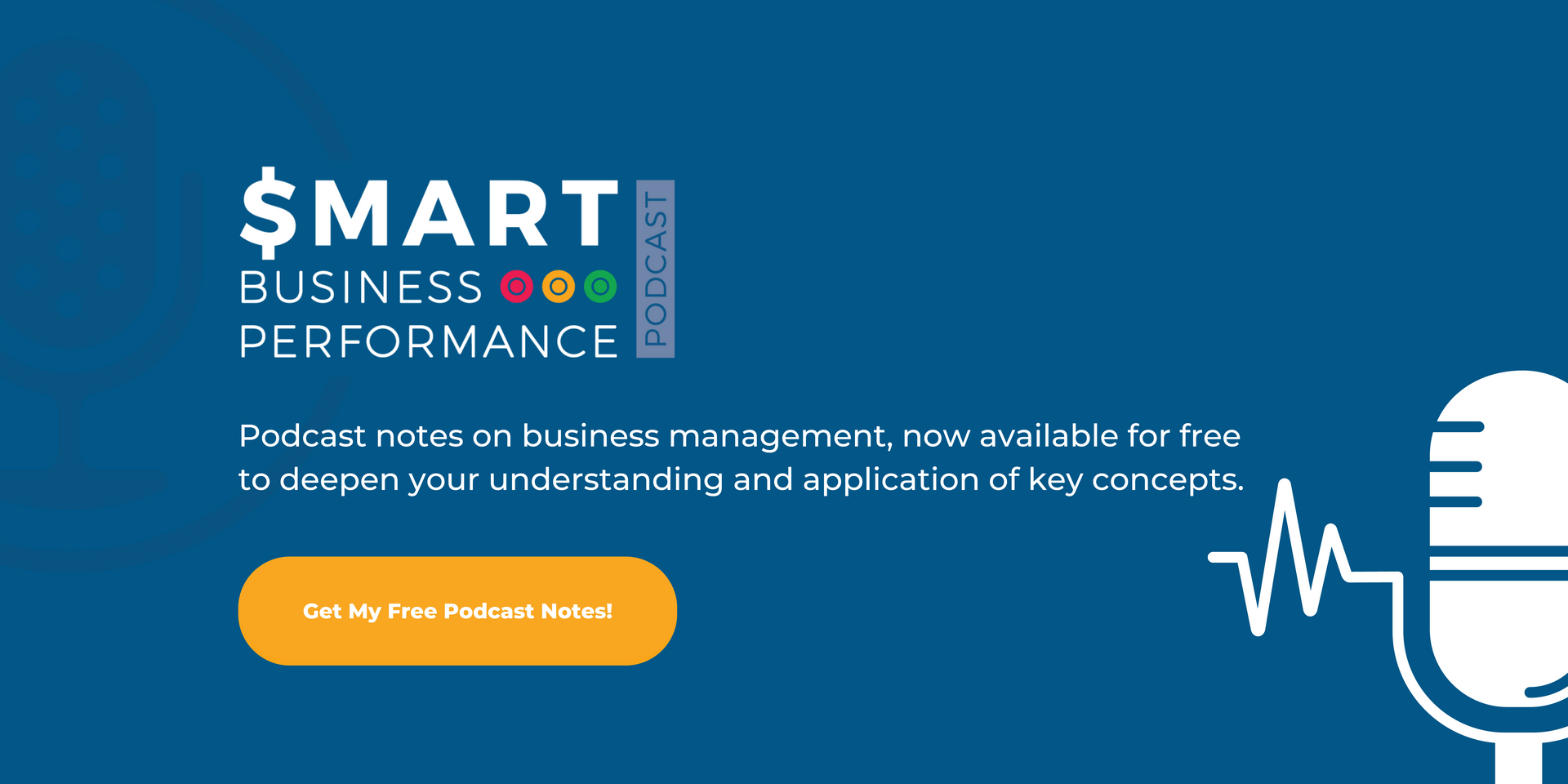SBP026: OKRs (Objective Key Results) the Key to Performance Management? Part 2of 2
Roger Knocker • January 27, 2024
SBP026: OKRs (Objective Key Results) the Key to Performance Management? Part 2of 2

In this episode of the Smart Business Performance Podcast, Roger talks with Alina Miertoiu.
Alina is the OKR Product Manager and a Senior Management Consultant at The KPI Institute. She has a professional background in business research, process improvement and management consulting, being involved in international strategy and performance-related projects for clients from various industries, including IT, utilities, healthcare, venture capital, financial services and manufacturing.
Starting with the basics about OKRs, they end up giving some powerful tips and tricks on how you can use OKRs to boost your business.
Tune in now and make sure to take away the notes with you!
[01:10] A snap recap of the previous episode
[03:03] Link it back to the vision and strategy
[14:16] Can OKRs and traditional KPIs co-exist?
[22:21] The Topic of Cadence
Special Reminder:
Check out the first episode with Alina and make sure to share your feedback with Alina
Connect with Alina:
On LinkedIn Email her at alina.miertoiu@kpiinstitute.com https://kpiinstitute.org/
Where can we find out more information?
OKR whitepaper written by Alina Miertoiu from the KPI Institute
If you enjoyed this episode of the Smart Business Performance Podcast, then make sure to subscribe to our podcast.
Alina is the OKR Product Manager and a Senior Management Consultant at The KPI Institute. She has a professional background in business research, process improvement and management consulting, being involved in international strategy and performance-related projects for clients from various industries, including IT, utilities, healthcare, venture capital, financial services and manufacturing.
Starting with the basics about OKRs, they end up giving some powerful tips and tricks on how you can use OKRs to boost your business.
Tune in now and make sure to take away the notes with you!
Conversation Highlights:
[01:10] A snap recap of the previous episode
- OKR is a goal-setting framework for defining and tracking objectives and their outcomes.
- The benefits of OKRs
- Objective v/s Key Result
- OKRs value purpose over performance.
- OKRs are more suited for a very innovative and fast-changing environment. They work better in a structured organisation.
[03:03] Link it back to the vision and strategy
- Settings up Individual OKRs
- You need to have 3 to 5 objectives and key results to measure each one of them. Alina doesn’t recommend the OKRs to focus mainly on the numbers.
- Try to set priorities rather than going for the numbers.
- What about the big organisations?
-
- If you are doing the same thing, you won’t get different results. Aspirational goals are the best way to know what we can do to have different results!
- Make sure to give your employees a safety blanket.
- What happens after you achieve your goal? How do you sustain your success?
- Balance the hygiene metrics with future-focused OKRs
[14:16] Can OKRs and traditional KPIs co-exist?
- With the OKRs, you are just trying to see what extra values and involvement they can bring.
- Can everyone use individual OKRs?
- If you want to have integrated OKRs, then you need to have approval.
- A story to take a lesson from…..
[22:21] The Topic of Cadence
- Is it a necessity to check your OKRs?
- You will need to readjust the path in order to achieve your goals.
- “A review doesn’t need to be a formal 3-hour long discussion as long as we have an informal short chat and we are in agreement.”
- Where does the agile framework meet the OKRs?
- A word of gratitude.
Special Reminder:
Check out the first episode with Alina and make sure to share your feedback with Alina
Connect with Alina:
On LinkedIn Email her at alina.miertoiu@kpiinstitute.com https://kpiinstitute.org/
Where can we find out more information?
OKR whitepaper written by Alina Miertoiu from the KPI Institute
If you enjoyed this episode of the Smart Business Performance Podcast, then make sure to subscribe to our podcast.

When did finance become the department of “no”? “No, we can’t spend that.” “No, that’s not in the budget.” “No, that’s not how we do it.” Here’s the truth: If finance is just a gatekeeper, it’s failing the business. Finance Isn’t Just About Numbers Andrew Brown put it bluntly on the FP&AI Podcast: “Finance should be leading conversations about the future, not just reporting the past.” Think about it— What’s the point of a month-end pack that no one reads? What’s the point of perfectly reconciled accounts if they don’t change the way decisions are made? Finance isn’t just about accuracy. It’s about impact . The Business Partner Mindset T he best finance professionals think like entrepreneurs. They ask: Where are we really making money? What assumptions are broken? How do we change the levers to hit our goals? They don’t just report results. They interpret them. They walk into the room with a story, a strategy, and a plan. What Johan Taught Us Remember Johan, the volunteer deacon who turned financial updates into action? He wasn’t trying to impress anyone with accounting jargon. He used a worm chart and a waterfall chart to tell a simple story: Are we on track with donations? If not, where are we falling behind—and why? It worked because it made the future clear. That’s what business partnering looks like. The Shift Every Finance Team Must Make B ookkeepers report. Business partners lead. The shift is subtle but powerful: From data-dumping to decision-driving. From hiding behind compliance to leading with insight. From “here are the numbers” to “here’s what they mean—and what to do next.” Your Move So, is your finance team stuck in bookkeeping mode? Or are you stepping up as a commercial conscience— the team that sees ahead and helps the business win? The mindset shift starts here: Stop asking “What happened?” Start asking “What’s next?” ________________________________________ This article is inspired by my conversation with Andrew Brown on the FP&AI Podcast – Episode 1: Finance as a True Business Partner – Beyond the Numbers.



